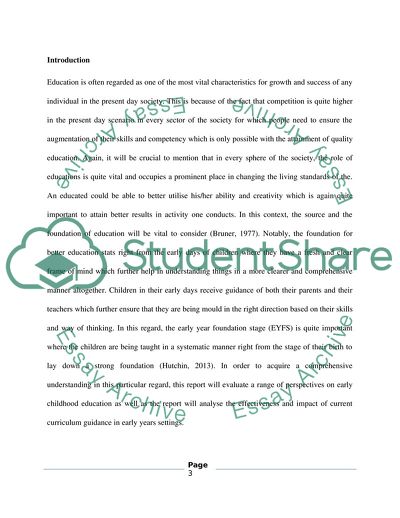Cite this document
(Would Early Years Settings Benefit from Integrating a Range of Perspectives into their Approach to Care and Education Assignment Example | Topics and Well Written Essays - 3250 words - 1, n.d.)
Would Early Years Settings Benefit from Integrating a Range of Perspectives into their Approach to Care and Education Assignment Example | Topics and Well Written Essays - 3250 words - 1. https://studentshare.org/education/1828179-assignment
Would Early Years Settings Benefit from Integrating a Range of Perspectives into their Approach to Care and Education Assignment Example | Topics and Well Written Essays - 3250 words - 1. https://studentshare.org/education/1828179-assignment
(Would Early Years Settings Benefit from Integrating a Range of Perspectives into Their Approach to Care and Education Assignment Example | Topics and Well Written Essays - 3250 Words - 1)
Would Early Years Settings Benefit from Integrating a Range of Perspectives into Their Approach to Care and Education Assignment Example | Topics and Well Written Essays - 3250 Words - 1. https://studentshare.org/education/1828179-assignment.
Would Early Years Settings Benefit from Integrating a Range of Perspectives into Their Approach to Care and Education Assignment Example | Topics and Well Written Essays - 3250 Words - 1. https://studentshare.org/education/1828179-assignment.
“Would Early Years Settings Benefit from Integrating a Range of Perspectives into Their Approach to Care and Education Assignment Example | Topics and Well Written Essays - 3250 Words - 1”. https://studentshare.org/education/1828179-assignment.


